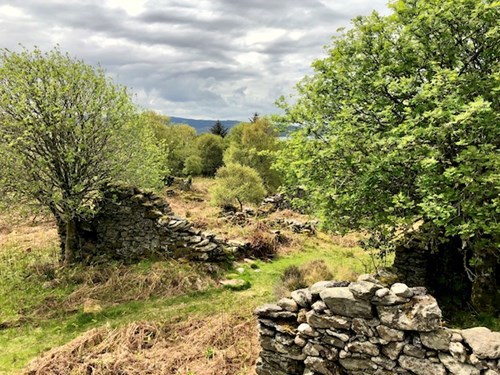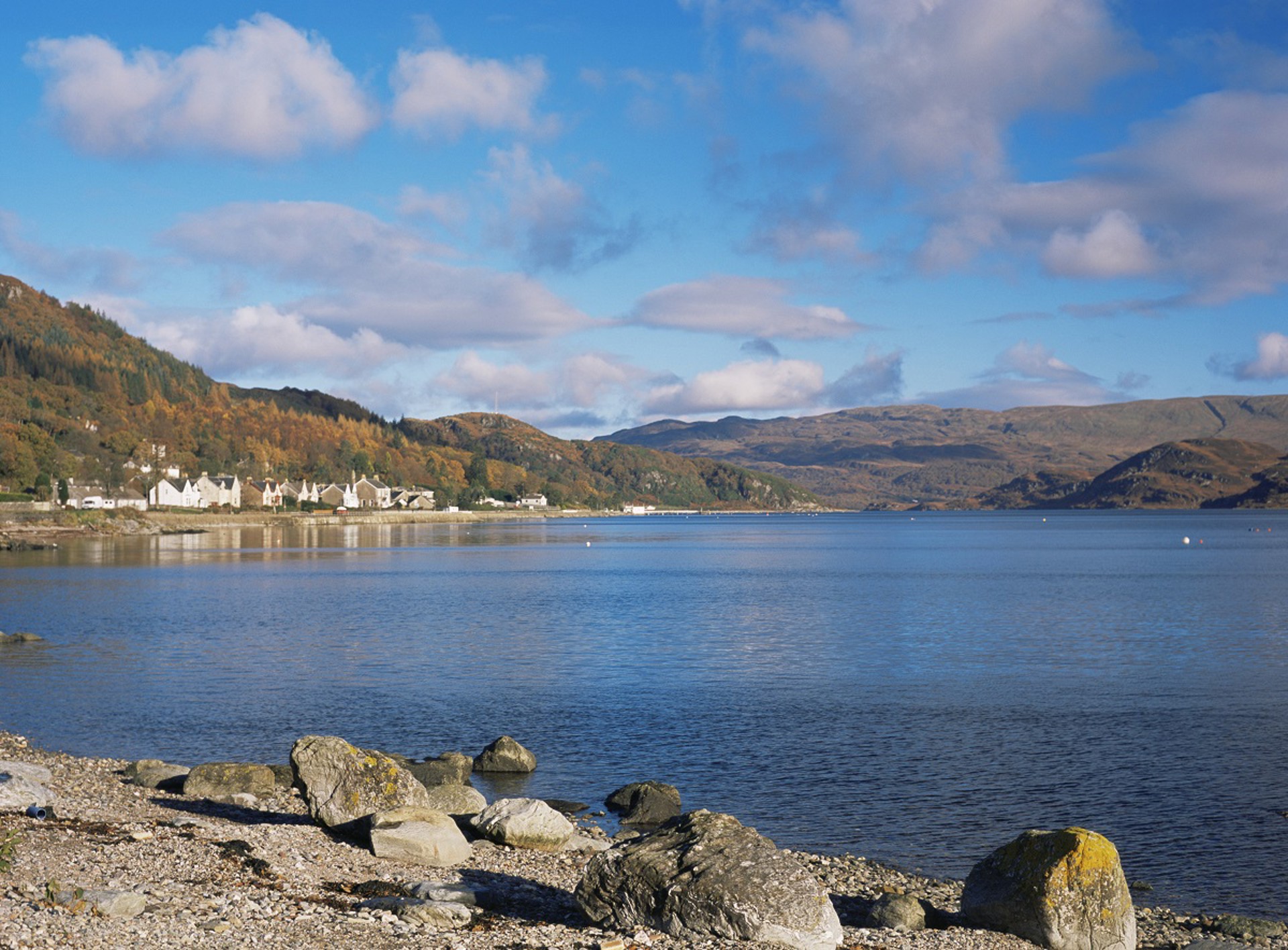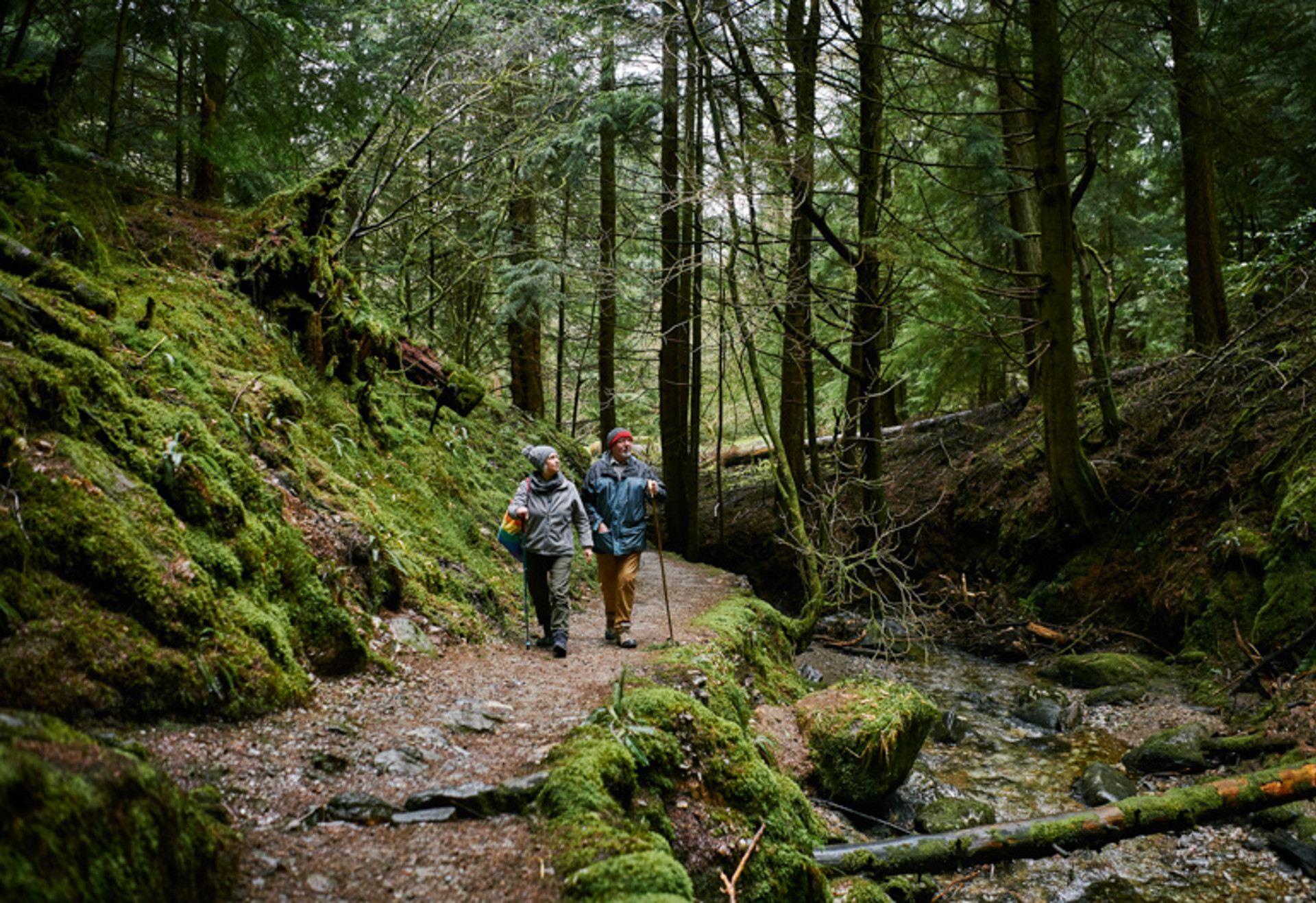Discover Argyll's Secret Coast's Architecture
The Victorians
There are some stunning Victorian villas in Tighnabruaich, built by wealthy merchants from Glasgow. Wellpark is a stunning example. Built in 1861, this elegant property was converted into a hotel in 2010. You’ll find superb original features, including stained glass windows, fireplaces, arts and crafts woodwork, a Victorian butler’s pantry and an amazing Edwardian bathroom.
Just along the road is Tighnabruaich Pier, one of the few surviving working wooden piers in the Firth of Clyde still in use for its original purpose. Until the opening in 1969 of the New Road into Tighnabruaich, the village depended almost entirely on the sea route.
Most of the best-loved steamers called at Tighnabruaich, including the famous Columba and the historic King Edward. The Waverley, the last ocean-going paddle steamer in the world, still calls here during the summer.
Modern marvel
For something more modern, head over to Portavadie, Loch Fyne. This is a remarkable story of transformation. It occupies a site which was originally intended to become an oil rig construction facility. This blot on the landscape was turned into a fabulous development, including a marina, accommodation and spa. It’s super modern, but designed to make the most of the setting and to blend in with the landscape. You’ll find floor-to-ceiling windows, natural stone and wood throughout. The new Spa & Leisure Experience is a wonderful light-filled, modern facility overlooking Loch Fyne. Built using glass, steel, stone and neutral tones, the new facility has also been created with the environment in mind and is powered by a woodchip biomass generator. Take a dip in Scotland’s biggest outdoor heated infinity pool!

Abandoned village
There are plenty of older buildings to seek out too. Argyll’s Secret Coast is dotted with fascinating ancient sites, from standing stones to cairns. Glenan Village is thought to date back to 1309 and was still inhabited many years after the Highland Clearances had led to many other villages being abandoned. The remains of several houses are still clearly visible and this is a haunting place to sit and imagine what life must have been like in harder times.

Ruined castles
The ruined Ascog Castle, on the shores of Ascog Loch, dates back to the 15th century and was the ancestral home of the McInnes Lamonts. There’s not much left of the castle today, but it’s a beautiful, tranquil place. For a more substantial ruined castle, head to Castle Lachlan on the eastern shore of Loch Fyne. The original castle dates back to the 13th century but was replaced in the 15th century with the keep or tower that today is in ruins. There’s an easy walk across the bay to see this atmospheric fortress.
On your way back from Castle Lachlan, drop into Kilfinan Parish Church. It’s been a place of worship since 1235 and the foundations are from this date. The church was rebuilt in 1759, incorporating the Lamont Vault of 1633, and was renovated by John Honeyman in 1882 giving the church interior and layout we see today.
Gunpowder works
You might also like to take a stroll around the village of Millhouse, once home to a thriving gunpowder mill. Production at Millhouse started in 1839 and ran until 1921. At its peak, the Mill comprised around 40 buildings in total, divided by the Craignafeaoch Burn into the High and Low Mills. The Mill was located in the wooded glen so the trees would provide protection from a blast, absorbing some of the explosion. The gable ends of the workers’ cottages didn’t have any windows for the same reason. The Mill Road was lined with cottages, many of which are renovated today, and a clock was mounted in the gable end of the manager's cottage next to to the timekeeping bell. The bell has been restored and re-erected at the cemetery as a memorial to the workers killed in explosions at the works



